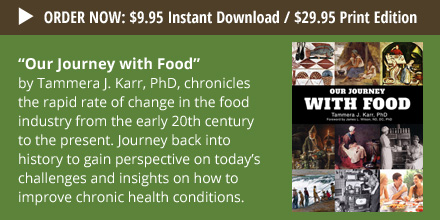Eat for Health
Is It Turmeric or Curcumin
By Tammera J. Karr, PhD., BCIH, CNC
Turmeric (Curcuma longa) or Indian saffron has been used for centuries in India and Southeast Asia, where by chance the prevalence of Alzheimer’s and cancers are a fraction of the westernized worlds. A perennial plant native to India cultivated in China, Bengal and Java for its rhizomes, and several other species of the curcuma genus grow wild in the forests of Southern Asia including India, Indonesia, Indochina, nearby Asian countries, and some Pacific Islands including Hawaii. All of these areas have traditional culinary and medicinal uses going back to pre-history. Turmeric needs warm tropical temperatures and plenty of rainfall to thrive, so that leaves out Oregon.
The herb Turmeric is a mild aromatic stimulant used in the manufacture of curry powders and mustards, in the same family as ginger, cardamom and zedoary. The curcumin in turmeric has recently been shown effective in the fight against breast cancer, osteoporosis, gluten sensitivity, Alzheimer’s, skin health and arthritis.
Without question, the scientific literature supports that this widely used spice possesses potent anti-inflammatory and antioxidant properties. However, curcumin lacks the ability to be readily absorbed from dietary sources and does not produce adequate, sustained blood levels for optimal impact on its own. Add black pepper, or dried ginger to help activate turmeric or choose supplements that include it. Commonly in the world of health science, just because findings look good on paper, it doesn’t mean it works on the cellular level were the health-promoting mission is accomplished, so I encourage you to use turmeric in cooking, salad dressings, soups, rice dishes or sauces, as this is one of the most traditional ways of utilizing this herb. In the book “the Blue Zone” a longitudinal study of factors common in long lived populations; the cultures with the greatest number of Centegenariens have a variety of ways turmeric compounds are made available in their diet, one is the predigesting and redistribution through goats and goat milk. I can hear your groans and gagging noises.
The Science
In a recent study it was discovered that curcumin’s natural anti-inflammatory and antioxidant properties may reduce both oxidative damage and pathological changes in the brain that frequently leads to brain abnormalities. More specifically, curcumin has been shown to reduce the incidence of harmful plaques by slowing deposition of beta-amyloid precursor protein (APP) within the brain, which is hypothesized to play a pivotal role in the progression of Alzheimer’s disease.
Curcumin produces beneficial effects on bone structure. Bone health and strength is a significant concern to people in the U.S., as it is estimated that 34 million have low bone density and are at risk of further problems. We know that millions of Americans are being overdosed on calcium for the supposed protection of their bones. Current research in the area of Nutrigenomics supports the idea that our bones require a long list of nutrients to maintain their flexibility and strength. Sulphanes contained in turmeric are some of those vital nutrients.
The researchers concluded “curcumin can prevent further deterioration of the bone structure and produce beneficial changes in bone turnover. (if you are not taking a prescription bone medication that prevents this.) The change of inflammatory cytokines, including TNF-alpha and IL-6, may play an important role in the mechanisms of action of curcumin, but the detailed mechanism remains unknown.”
A recent study evaluated curcumin, on allergic airway inflammation and hyper-responsiveness. According to the American Academy of Allergy, Asthma and Immunology, 34.1 million Americans have been diagnosed with asthma during their lifetime, and the academy estimates that the number of Americans with asthma will increase by over 100 million by 2025. The study authors stated that in mice, “Curcumin attenuates the development of allergic airway inflammation and hyper-responsiveness, possibly through inhibition of NF-kappaB activation in the asthmatic lung tissue. Our results indicate that curcumin may attenuate development of asthma by inhibition of NF-kappaB activation.”
Common Uses
Abrasions/Cuts * Aches & Pains * Cancer Prevention * Candida/Yeast Infection * Cholesterol Control * Concentration/Memory/Focus * Culinary * Eye care – Vision * General Health Tonics * Gout * Heart Tonics/Cordials * Lupus * Osteoarthritis * Rheumatoid Arthritis * Stop Smoking
Properties
Anti-inflammatory* Analgesic* Antibacterial* Cardic tonic Cordial* Hepatic* COX-2 Inhibitor* Antifungal* Aromatic*
Parts Used: rhizome
Constituents: volatile oils (terpene, curcumen), starch, albumen (30%), coloring due chiefly to curcumin, potassium, vitamin c
So add a little spice to your life and health to your brain, bones and lungs.



